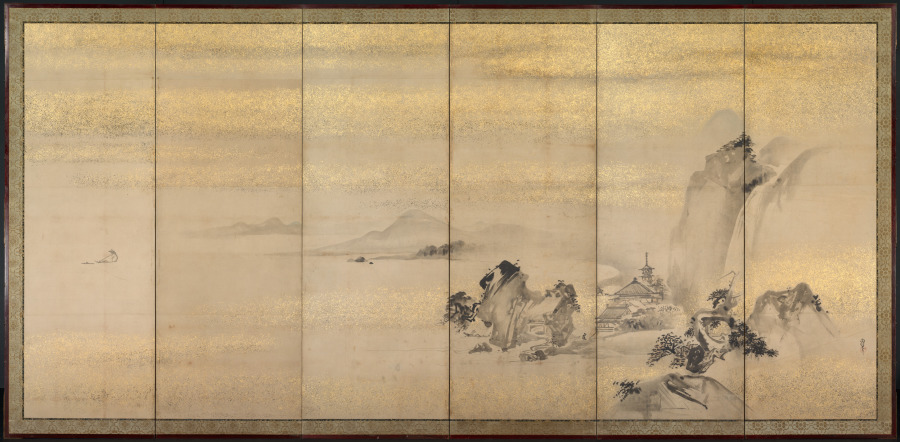| schema:description 10 | "measurements: Framed: 170 x 354 x 58.7 cm (66 15/16 x 139 3/8 x 23 1/8 in.)" |
| schema:description | "wall_description: This sparse composition depicts a summer scene on the right and a winter scene on the left. Careful observation reveals that the pair of screens was once damaged, and a later conservation including new sections of paper and inpainting sought to preserve the original flavor of the paintings so they could continue to be appreciated. Kano Naonobu was born in Kyoto, the younger brother of major painter and authenticator Kano Tan’yū (1602–1674). He relocated to Edo (present-day Tokyo) at the behest of the Tokugawa government in 1630 where he worked with his brother and teacher. In Kyoto, he helped his brother with paintings for Nijō Castle and the major Pure Land Buddhist temple Chion’in....(more)" |
| schema:description | "tombstone: Summer and Winter Landscapes (one of a pair), 1600s. Kano Naonobu (Japanese, 1607-1650). Six-panel folding screen; ink on gold- and silver-decorated paper; framed: 170 x 354 x 58.7 cm (66 15/16 x 139 3/8 x 23 1/8 in.). The Cleveland Museum of Art, Gift from the Collection of George Gund III 2015.481.1...(more)" |
| schema:description | "culture: Japan, Edo period (1615-1868)" |
| schema:description | "id: 86118" |
| schema:description | "inscription: signed: "Jitekisai Naonobu"" |
| schema:description | "creditline: Gift from the Collection of George Gund III" |
| schema:description | "collection: ASIAN - Folding screen" |
| schema:description | "technique: six-panel folding screen; ink on gold- and silver-decorated paper" |
| schema:description | "type: Painting" |

